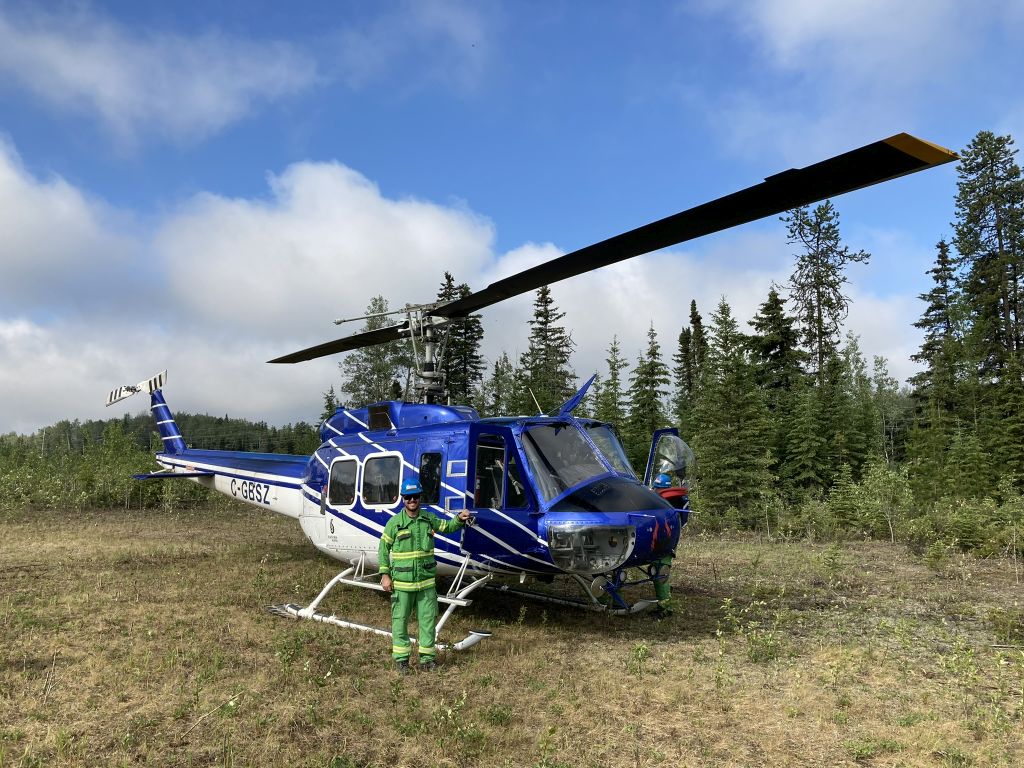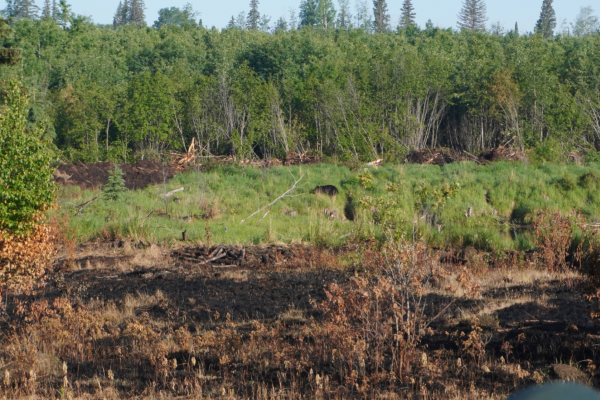Crews from Forest Fire Management Victoria (FFMVic) recently returned from a deployment in the vast Alberta wilderness. For firefighter Callum Prest, the literal ground beneath their feet was like nothing encountered at home.
The landscape, climate and conditions were such a contrast from Victoria forcing the team to adapt and learn in what was an unforgettable experience.

A unique environment
Unlike the often dry Australian bush, the Keg River fire area in Canada was generally flat and surprisingly swampy.
'Locals referred to it as 'muskeg,' a peat bog characterised by numerous shallow water bodies', said Callum.
The dominant tree types were spruce and poplar, growing with a thick layer of scrub beneath their canopy.
This unique environment came with its own set of challenges. 'The area was so flat, any rain caused our dozer lines to get extremely muddy and made work and travel in these conditions hard.'
Beyond the environmental hurdles, there was a constant, heightened awareness of the local wildlife.
Black bears, grizzly bears, and moose were always in the back of the firefighters' minds, with fresh tracks a common sight.
'Luckily, the only bear I actually saw was a smaller black bear, and I was safely inside a vehicle,' Callum said.
The scale of the Canadian fires was another point of contrast to the Australian crews. Callum was assigned to the 050 Keg River fire, just one of 50 major wildfires burning simultaneously across the province.

Can you spot the small black bear in the background?
Firefighting tactics also varied
The abundance of water in Canada allowed for the use of pumps and hose lay, a strategy rarely employed on such a scale back home.
Firefighters use hoses that roll to be easily transported, quickly deployed, and easily re-rolled, walking kilometres from the water source to the fire front.
Mineral earth breaks were almost non-existent in the peat-rich soil, as it would require digging two meters into the ground to find dry dirt.
Helicopters are relied on for both personnel transport in and out of inaccessible fire zones and for direct water bombing.
Callum picked up new skills such as 'meloning', a 32 mm hose – 'a Canadian technique for quick, tangle-free rolling and redeployment,' he said.
Communicating with helicopter pilots was another new lesson, helping to foster relationships for effective aerial support.
Logistically, the deployment differed from Australia. Instead of tents, the crew stayed in a comfortable camp set up for the oil industry, with portable buildings and individual rooms for each firefighter.
The remote fire operations demanded being self-sufficient. Firefighters carried all their daily food and water, as being dropped in by a helicopter meant there was no return until evening.
Equipment was largely similar, although Canadian Mark 3 pumps were smaller and more portable, designed for backpack transport.
Unique Canadian machinery like the tracked Nodwell vehicle designed for for muskeg,mud and snow ‘the one we used had a water tank on the back with a pump system and were helpful but slow moving,’ Callum said.
The amphibious Sherp (a mini-monster truck for personnel transport) were used for challenging terrain.
Beyond the technical aspects, the deployment was a great life experience.
'Meeting people from diverse backgrounds, sharing stories, learning new 'lingo' and witnessing the confusion caused by Aussie slang, created lasting bonds,' said Callum.
FFMVic thanks all the returned firefighters for their contribution to the Canadian wildfire response.

Australian firefighters deployed to help with Canadian fires.
Page last updated: 22/08/25